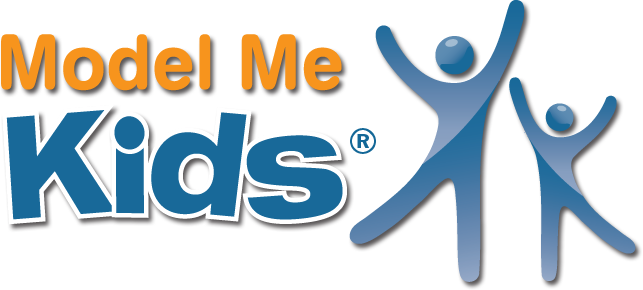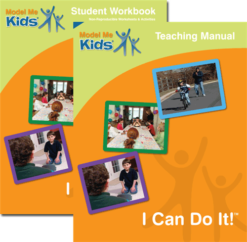
I Can Do It!™
Autism Behavior
I Can Do It!™ teaches social skills by showing elementary school-aged children navigating various challenging social situations.
Elementary, Middle School
Run Time: Approx. 53 Minutes
Watch Preview
I Can Do It!™
Topics
Handle Criticism
Wait
Do What is Asked
Friend Says “No”
Losing
Teamwork
Transitions
Take Turns
Try Something New
Birthday Party
Manual & Workbook
The teaching manual and student workbook for this video promote learning through adaptable lesson plans paired with visual exercises. These resources support skill acquisition in the classroom, at home, and in the community.

About the Video
The I Can Do It!™ video presents social skills in the context of challenging circumstances. It features elementary school-aged children demonstrating appropriate behavior in a variety of difficult situations. Each scene lasts between 30 seconds and 3 minutes, depending on the chapter. At the end of each chapter is a storyboard summarizing the rules taught. Children in the video serve as hosts, narrating each scene. The visual is combined with narration and graphics that explicitly explain the particular rule. Each social skill is demonstrated in more than one situation and across environments. As a result, children with learn generalization of the skill taught.

Autism Behavior
Autism behaviors manifest across a spectrum, encompassing a diverse range of challenges that impact social interaction. Individuals with Autism may struggle with interpreting social cues, making it challenging to engage in typical social interactions. Communication difficulties often lead to expressive and receptive language challenges, affecting verbal and non-verbal expression. Rigid adherence to routines may serve as coping mechanisms but can hinder adaptability. Understanding and addressing these behaviors are vital for personalized interventions that cater to the unique needs of each individual with Autism. Tailored behavioral strategies, social skills training, and communication support can empower them to navigate daily life more effectively, fostering inclusion and enhancing their overall well-being within diverse social contexts. Recognizing the spectrum’s richness allows for a more comprehensive and compassionate approach to understanding and supporting individuals with Autism and their unique behavioral profiles.

